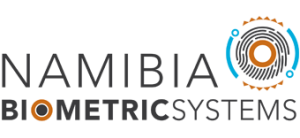Multimodal Biometrics Fusion using Multi-Instance
The previous two articles focused on multi-sensor fusion strategy and multi-algorithm strategies. Multi-sensor fusion strategy utilises a single biometric trait captured using multiple sensors in order to extract diverse information from the image. On the other hand, multi-algorithm systems circumvent the limitations of multi-sensor as multi-algorithm systems do not require the use of additional biometric capturing devices and the associated costs. In addition, the users are not required to interact with multiple capturing devices and thus enhance user convenience. However, NBS researcher at the Biometric Research Laboratory, BRL, are keen to highlight multi-algorithm fusion requires the introduction of a new feature extractor and/or matcher modules which may increase the computational requirements of the system.
In this article we introduce multi-instance fusion strategy. Multi-instance fusion strategy utilises multiple instances of the same body trait. This can be illustrated using multiple examples, the left and right index fingers of an individual may be used to verify an individual’s identity. However, multi-instance fusion strategy does not impose the introduction of new sensors nor does it entail the development of new feature extraction and matching algorithms. Similarly, the left and right iris of an individual does not require the introduction of new sensors or multiple algorithms which introduces associated costs and computational complexity. Multi-instance overcomes the limitations of both multi-sensor and multi-algorithms. Multi-instance fusion strategy has the limitations that it may be slow and may result in poor customer satisfaction. Researchers at BRL highlights that the limitations of multi-instances can be simply overcome by a new sensor arrangement in order to facilitate the simultaneous capture of the various units/instances. Multi-instance fusion strategy is advantageous for individuals whose biometric characteristics cannot be reliably captured due to inherent problems. For example, an Automated Fingerprint Identification Systems (AFIS), may benefit from sensors that are able to rapidly acquire impressions of all ten fingers. NBS researchers understand that a single finger may not be a sufficient discrirninator for a person having dry skin or bad fingerprints. Therefore, the integration of evidence across multiple fingers may serve as a good discriminator. Similarly, an iris system may not be able to image significant portions of a person’s iris due to drooping eyelids.
Other fields – Information fusion continue to be used in a diversity of scientific fields such as Object detection. Many applications attempt to detect and establish the trajectories of objects based on the evidence supplied by multiple image modalities. The fusion of visible and non-visible information pertaining to different wavelengths in the electromagnetic spectrum such as radar and infrared images, thermal and visible spectrum images may assist in estimating the location and kinematic features of objects such a squad of soldiers in a night-time battlefield. These applications rely on image fusion methodologies to combine multiple modalities.
Our researchers within BRL at Namibia Biometric Systems will continue to examine the levels of fusion that are possible in a multimodal biometric system in the next article. In addition, our researchers at BRL would like to thank all the readers of the articles from Namibia, Africa and world wide.
More information on the implementation of biometrics based solutions can be requested from info@namibiabiometricsystems.com.
